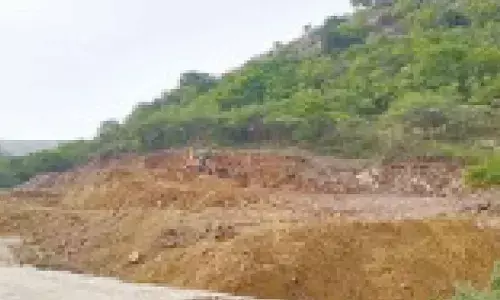This holy land of VARANASI
The Lord Buddha in his first sermon, preached about the doctrine of Buddhism along with the four noble truths and eight fold paths at Sarnath
Sarnath considered one of the most important sites in the Buddhist Circuit makes the holy city of Varanasi an important pilgrimage centre for Buddhist pilgrims from Asia as well as tourists from all over the world. Located 10kms north east of Varanasi with its name derived from the Sanskrit word "Saranganatha" (Lord of the Deer) was the deer park where Buddha gave his first sermon and where deer roamed around without fear. There are several guides waiting at the entrance of this site to tell visitors about its history, legend and spiritual importance. Just as in Bodh Gaya, a number of countries which have Buddhism as a major religion like Japan, Thailand, Tibet, Sri Lanka and Myanmar have built temples and monasteries in Sarnath and these reflect their architectural styles our guide Ajay Tripathi informs us. This place typically presents an overview of Buddhist architecture. As we were familiar with these styles from Bodh Gaya we were more interested in seeing the viharas, stupas and the archaeological museum which houses the famous Ashokan lion capital.
Seven weeks after he attained enlightenment under the Bodhi tree at Bodh Gaya, Buddha is said to have traveled to Sarnath also known as Mrigadava, Rishipatana and Isapattana which in Pali meant a place where Holy men resided. It was here that the sangha or community of enlightened persons was formed after Buddha enlightened five persons with his teachings of Dharma. The sermon that Buddha gave to these five monks was his first sermon known as "Dhammachakkappavattana Suta" and we got to see the ruins of this stupa known as "Dhamek Stupa" Another important structure here where Buddha is supposed to have spent his first rainy season is the "Mulagandhakuti Vihara". This was the main temple which had the famous Ashoka pillar in front and the well-known statue of Buddha in the "Dhramachakra Pravartana Mudra" was discovered in its vicinity. It is a long walk as we pass through the ruins of stupas and viharas that related to Buddhas stay here and his various teachings. There is lush green grass and trees all around and there are benches where tourists can sit for a while before they resume their walk.
The Sarnath Archaeological museum is indeed a veritable treasure house with various works of great historical importance preserved with care. It is one of the oldest site museums of the Archaeological Survey if Indi (ASI) and was built in 1910 by John Marshall, the then director general of Archaeology in India. Built entirely in sandstone it is designed like a vihara with a central hall and galleries that are like monastic cells housing historically important finings and several Buddhist antiquities. More than 6, 800 excavations were conducted at Sarnath leading to the discovery of rare antiquities our guide tells us. We walk past a rich collection of sculptures, edifices, parts of ruined structures, and stone carved images of Buddha and Bodhisattva.
The famous Ashokan lion capital here is said to have miraculously survived a 45-foot height drop to the ground from the top of the pillar. It became the national symbol and the national symbol on the Indian flag. A sculpture of four Asiatic lions standing back to back on an elaborate base carved out of a single block of polished sandstone, it was placed by the great Mauryan emperor Ashoka on top of the pillar he built at Sarnath in 250BCE. The four lions are said to symbolise the 'four noble truths' of Buddhism. We take more than an hour to see the well preserved artifacts that take us through the life and times of Buddha and his preaching of Dharma. Walking through the galleries one feels a strange peace that is almost meditative.
In the ruins and well preserved statues and findings from the site lies the essence of Buddha. Saranath is a worthwhile trip that brings alive the mystique of Budhha and the peace and love that pervade his teachings. It is both a spiritual sojourn and a historical overview and is a site worth visiting.























